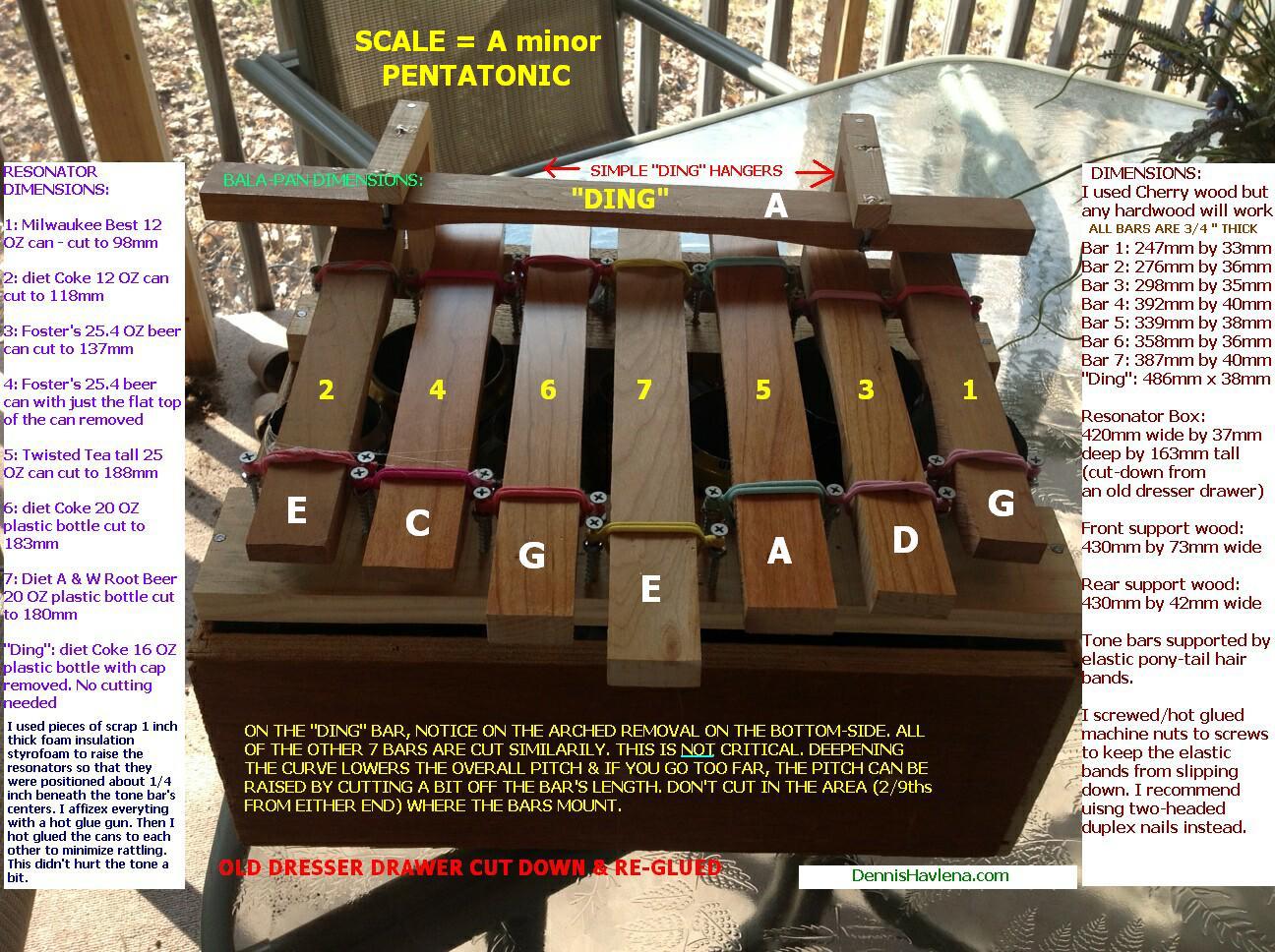
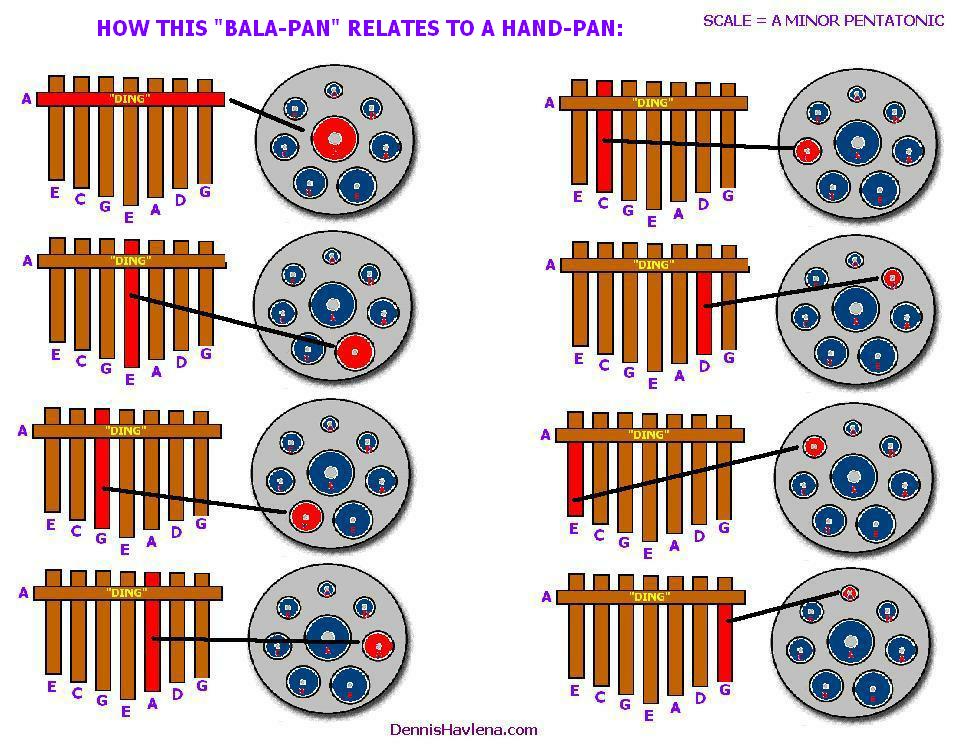
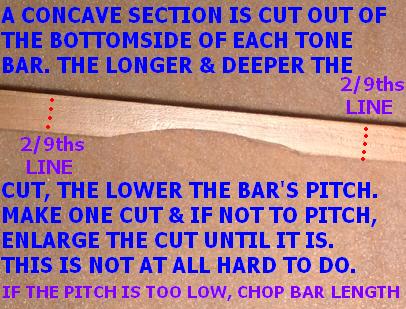
Additional photos are at the bottom of this article.
CLICK
HERE to hear me playing this Bala-Pan on YouTube.
Habitat for Humanity in Harbor Springs, Michigan sold very inexpensively. pieces of 3/4
inch thick cherry-wood, which I processed to make the tone bars for this instrument.
Any hardwood should work fine.
This was a three-evening part-time project that turned out really nice.
Being mesmerized by the west African Balafon during a trip to Senegal in late 2011,
I set about to invent an instrument loosely based on the balafon but with the tone
bars arranged (right-left-right-left etc) in a similar fashion to a hand-pan (Halo,
Hang-drum etc) & am very happy with how things turned out.
The illustration here lays out the idea and dimensions of the instrument & should
be pretty self explanitory. There really is not much to know in order to turn a
strip of hardwood (& tune the thing) into a tone-bar. Experimentation is the thing.
Start with the longer, lower-pitched notes -- that way, if you make a mistake, you
can always use the disaster for the next lowest note.
Essentially, to create a marimba/balafon tone bar, the only thing you have to
do is to cut (I used a band-saw but this can be done with a coping saw or even, as
in Africa, an adze or equivalent) a semi-circular chunk of wood out of the bottom-side
of the bar. Quite non-understandably (to me) is the fact that if you start with a
solid bar and tap it to hear it's musical tone, when you then make the semi-circular
cut in it's bottom, the pitch drastically DROPS! Counter intuitive to me -- Seems
logical that if you remove material from a substance, the pitch will be raised -- but
not so here! I deal with just building things and not the technical theory -- The
amount of wood removed during the semi-circular cutting determines the pitch.
Lots of trial and error but if you take too much off and the pitch is too low,
the tone bar can easily be salvaged by then chopping off a bit of the bar's length,
which raises the pitch.
Anyhow, for an equally non-understandable reason, 2/9 from each end of the length of a
bar there's some kind of "node" -- If you grab the bar 2/9 of the way from either end
& hit it in the middle with a mallet, the note rings clear and clean. If you grab it
at one end (or anywhere other than 2/9 from either end) the note thuds! Why 2/9ths?
dunno! But it is. Therefore, the mounting points of Marimba and Balafon bars is is
2/9 from the ends.
Traditionally, gourds of varying size are used as resonators for the African balafon.
I used more available pop and beer cans/bottles, carefully cutting them so they
resonated at the same pitches as the tone bars and mounted in the box underneath
individual tone bars. I tried using gourds, but the cans sounded every bit as good!
The use of cans and bottles for resonators is not my idea - I've seen others on the
internet use cans as marimba resonators but they're perfect for this project.
These cans's bases are raised from the bottom using pieces of cardboard and are then
hot-glued so the opening of the cans are maybe 1/2 inch beneath the bottom of the middle
of each tone bar. Quite basic and simple but works nicely. It's easy to fine-tune the
resonator cans to pitch -- simply blow over the top lightly (kinda like you'd blow a
beer bottle to make it sound) & the pitch is easily hears. Keep taking small amounts
of material off the top of the cans/bottles until the pitch matches the tone bars.
There is some leeway here - you don't have to be spot on.
NOTE: Be really careful when scisoring the aluminum cans - they can cut one's
hand mercilessly.
I built the box for this thing by slicing up and re-gluing an old dresser drawer.
The hollow of the box provides some resonance to the notes but because of the use of
can/bottle resonators, the dimensions
of the box are not critical.
The tone bars are supported between "duplex (double-headed) nails, or in my case
(I didn't have any duples nails) REWORK. I raided my daughter's pony-tail tie drawer
& these things made great, elastic and non-muting supports for the tone bars.
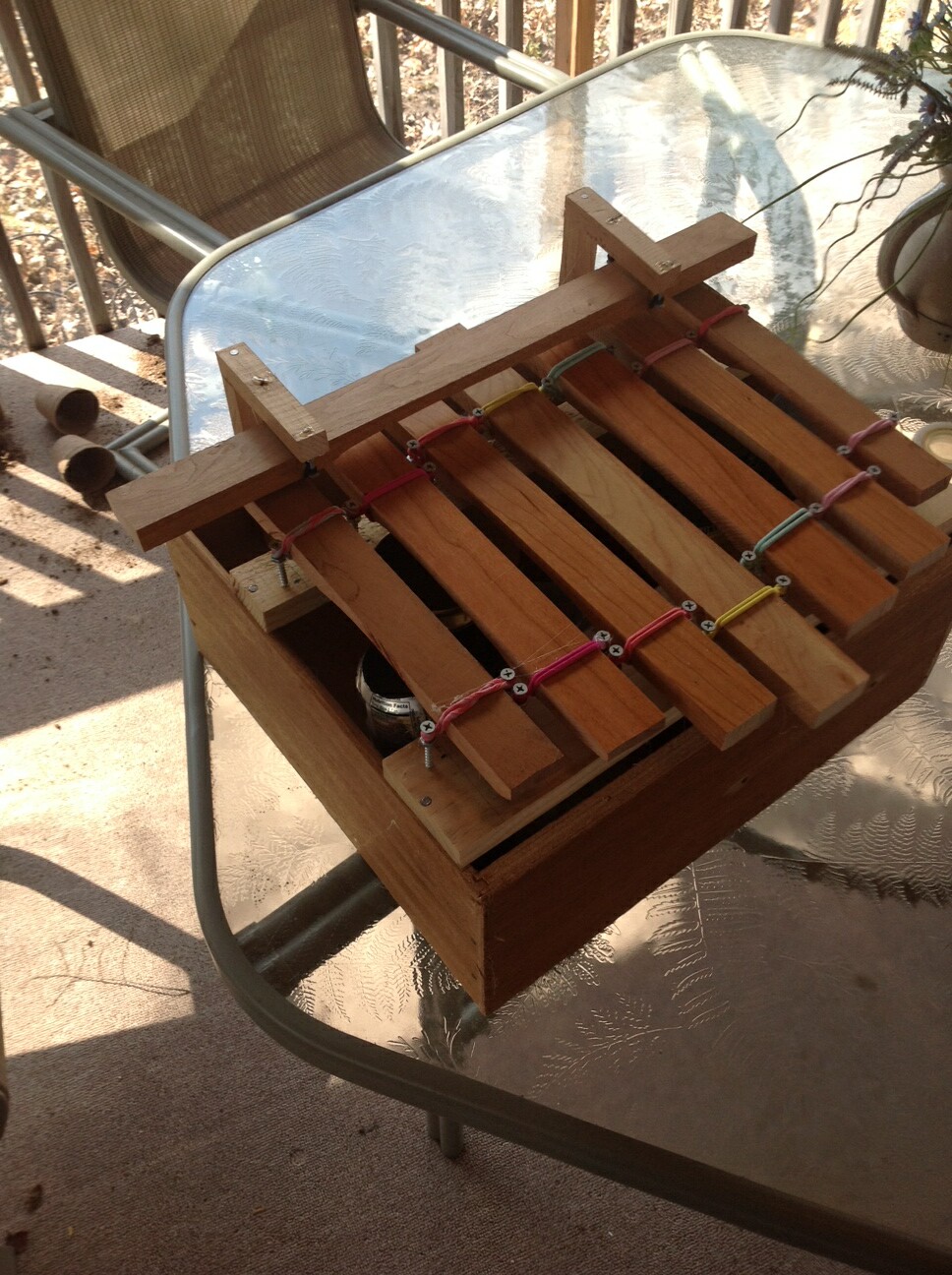
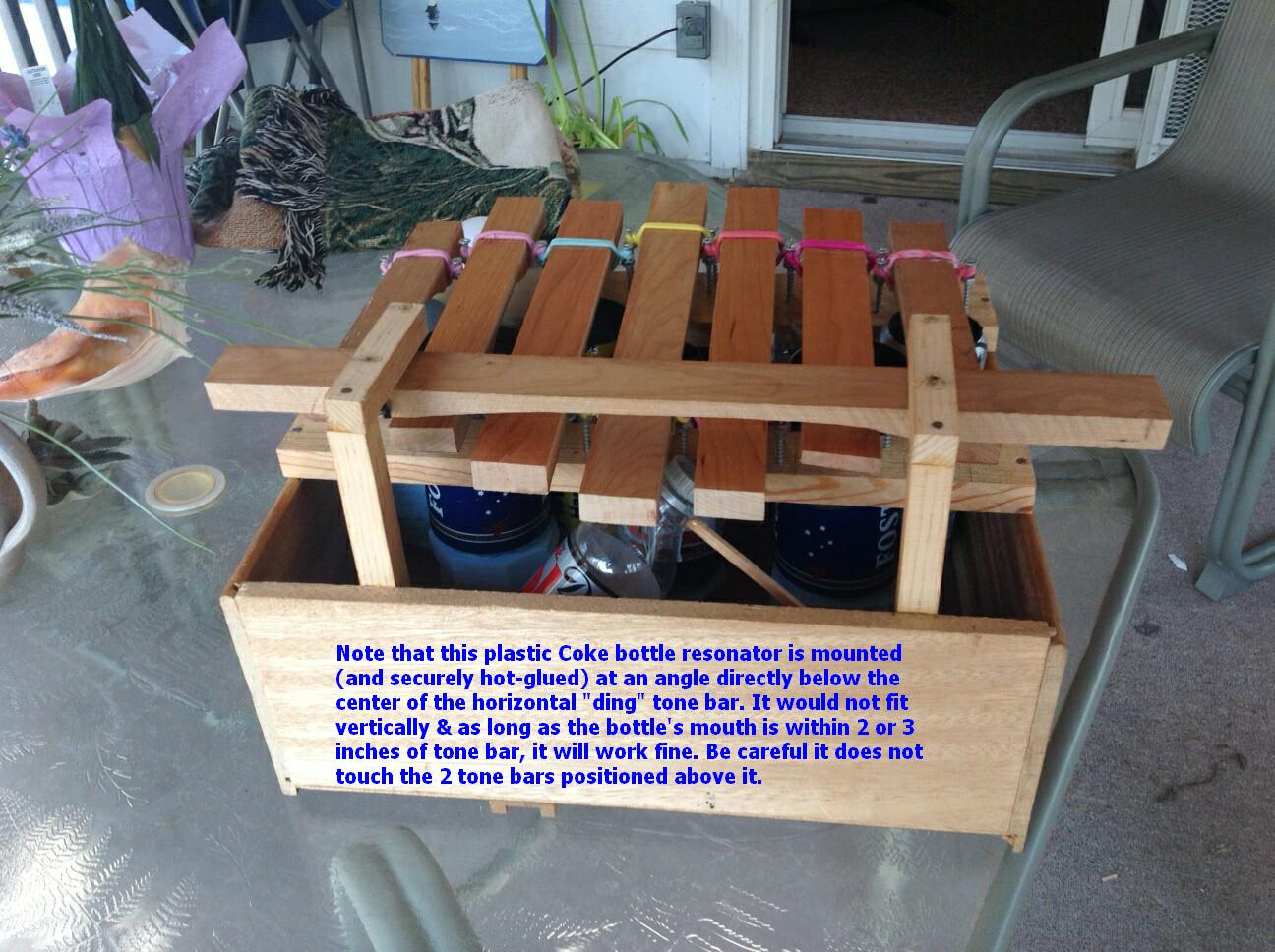
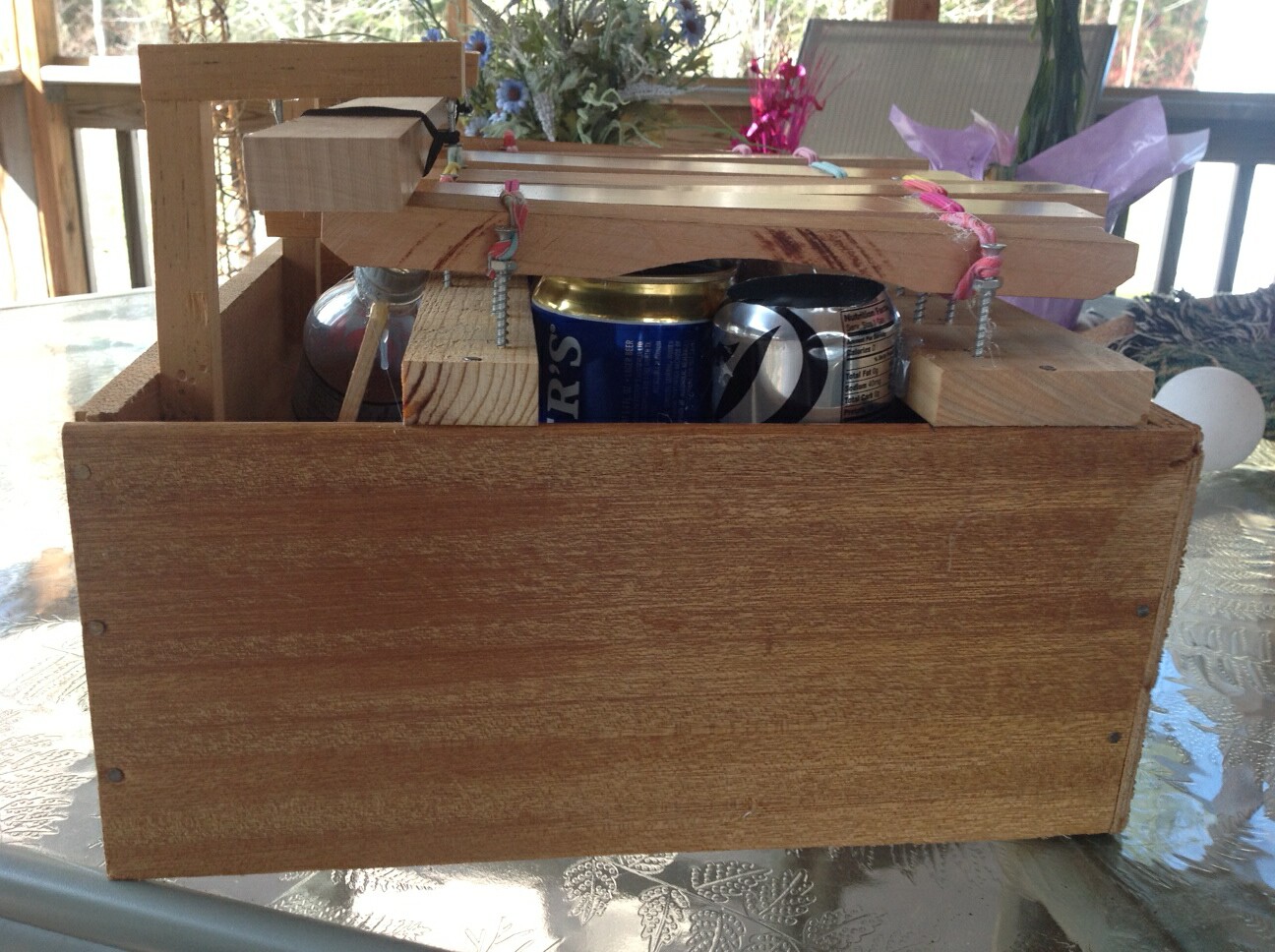

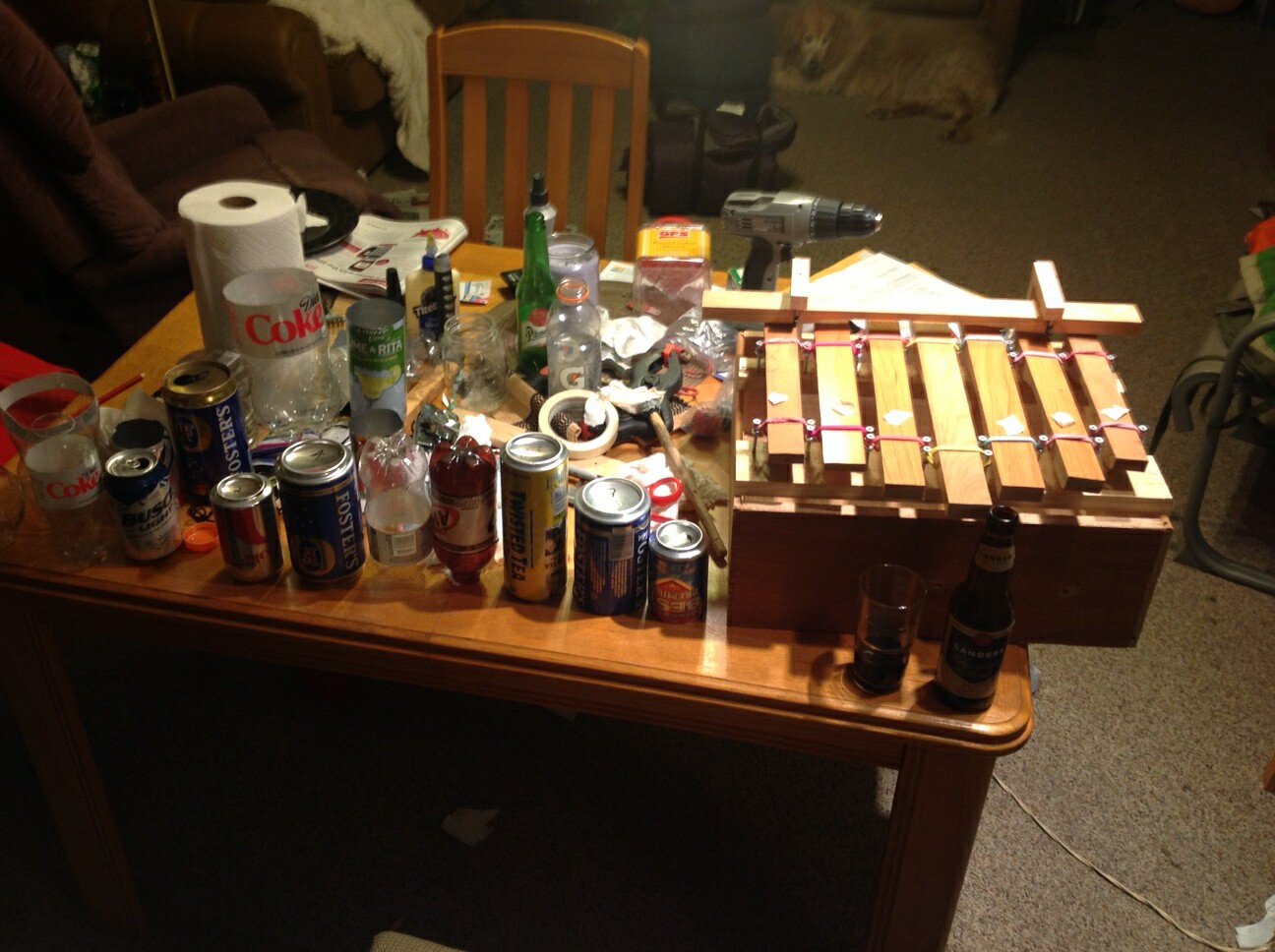

As time permits, I'll try to upload a short video of this thing to youtube.
Let me know if you have any questions or ideas. Thanks.
Dennis Havlena - W8MI
dhavlena@gmail.com
April 27, 2013
northern Michigan
dhavlena@gmail.com
DennisHavlena.com
Click here to access
my webpage
keywords: balafon bala bala-pan hand-pan hang halo havlena cheboygan marimba